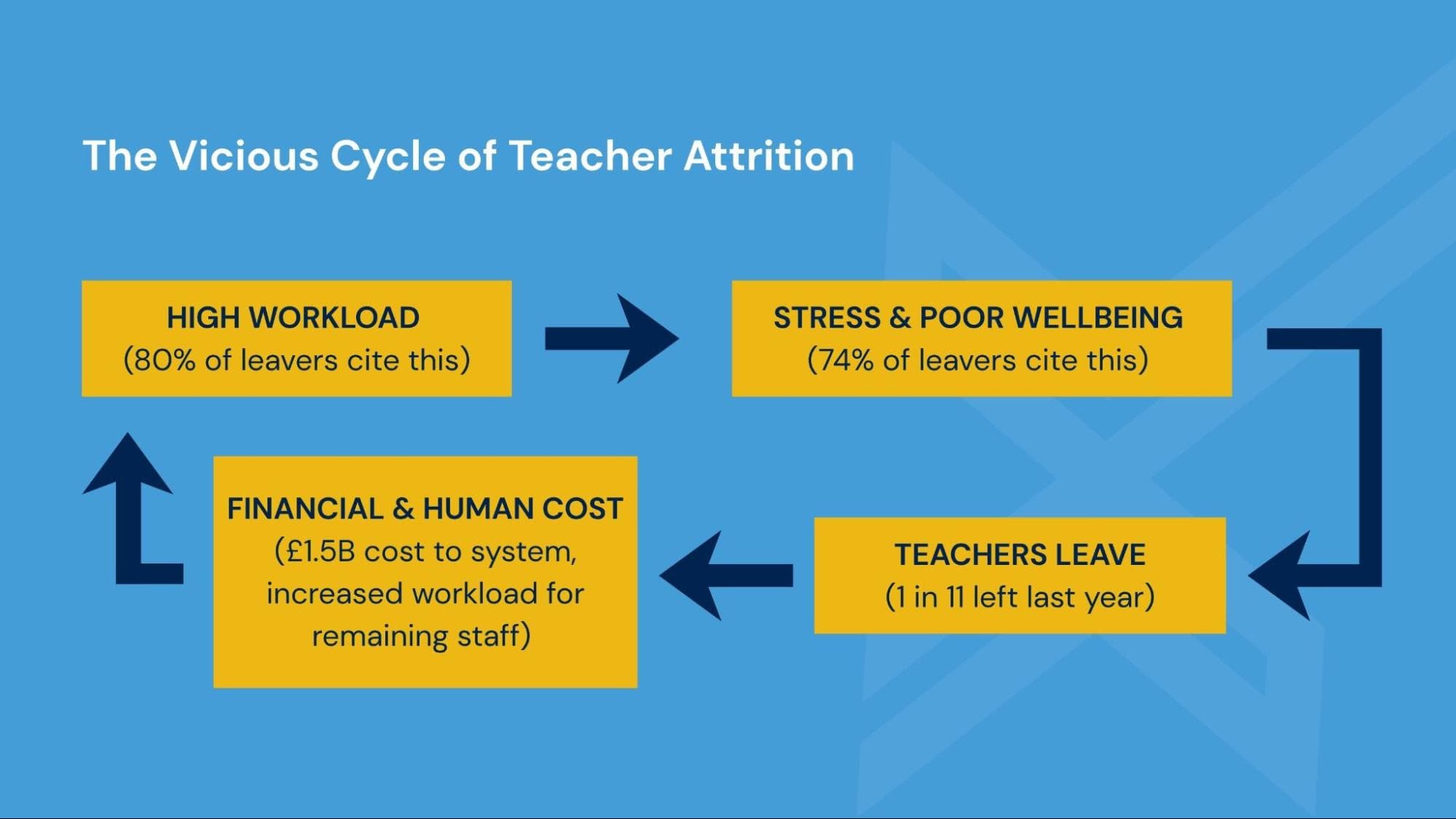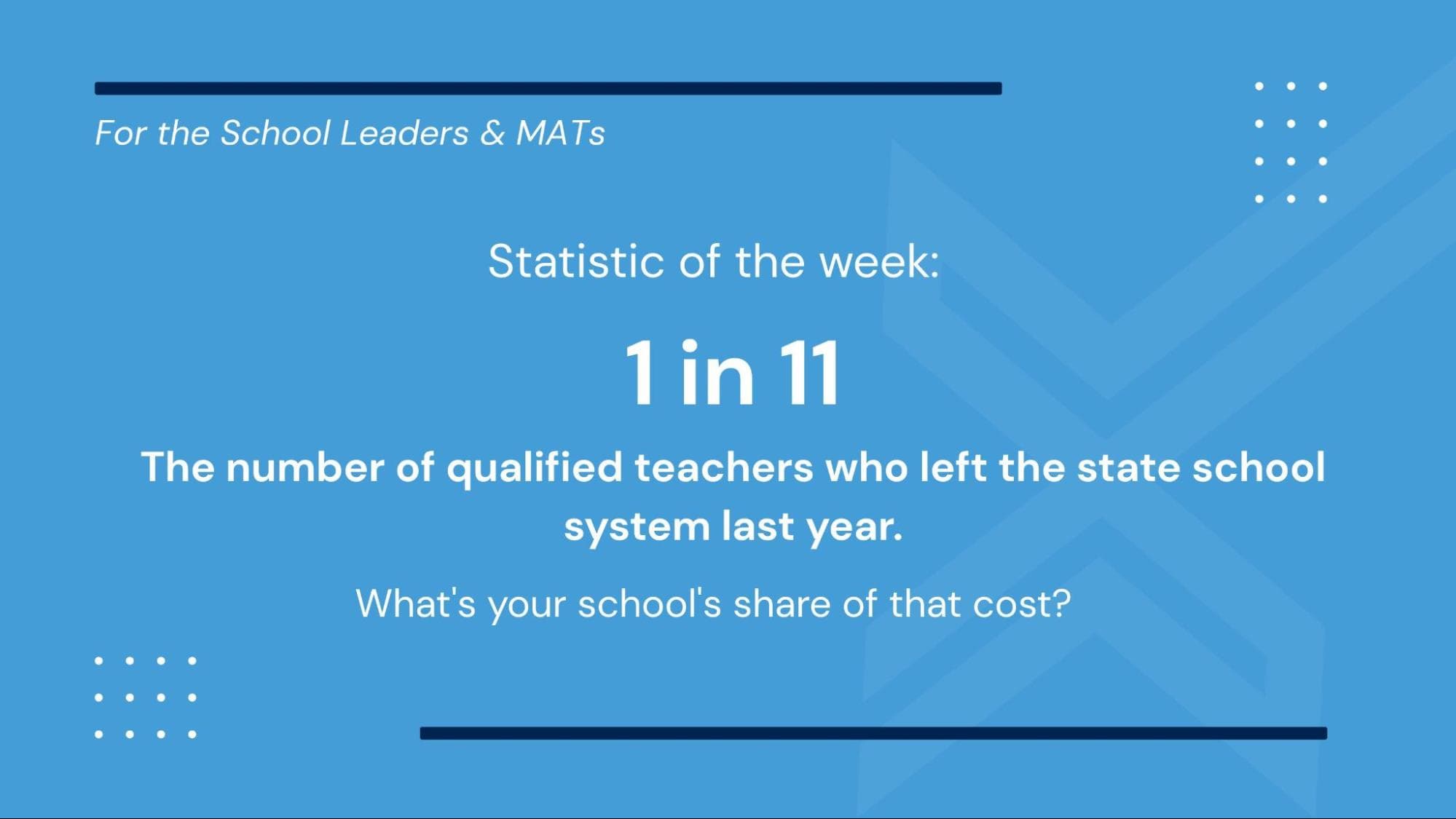Why is Teacher Retention a £1.5B Problem for UK Schools?
A new, must-read report from Education Support, "Revisiting the teacher retention crisis," has just been published, and its findings are a code-red warning for the entire sector.
The report's title is a sobering reminder that this problem isn't new, but it is escalating. It reveals a 44% increase in teachers leaving the profession between 2021-23 and confirms that 1 in 11 qualified teachers left the state school system last year.
This isn't just a staffing headache; it's a financial catastrophe. The report estimates the total cost of this attrition, including lost training and recruitment, rises to over £1.5 billion per year. As the report states, high turnover disproportionately harms pupils in disadvantaged communities, making retention the "cornerstone of educational quality and equity".
The report is a clear call to action, and it points to one overwhelming culprit.
The Problem: The Vicious Cycle of Workload and Stress
The report leaves no room for ambiguity. When asking why teachers leave, the data from the DfE's own surveys is shocking: both "High Workload" and "Stress and Poor Wellbeing" being cited by 90%
The report correctly identifies this as a "workplace wellbeing problem". The workload is the cause; the stress, burnout, and poor health are the symptoms. This is the hard data behind the story of James, our maths teacher, and his "weekend thief" of marking. It's not a personal failing; it's a systemic one.

The Never-Ending Cycle of Stress
The Traditional Fix: The Report's Call to Action
Education Support's report is not just a diagnosis; it's a prescription. It calls for a "coherent, long-term teacher retention strategy" and outlines specific actions for school leaders, grounded in a 12-driver model of workplace wellbeing.
The key recommendations for employers are exactly right:
- Review workload practices at least annually.
- Continue to minimise overwork.
- Directly challenge presenteeism.
- Ensure PPA time is respected and not compromised.
These are the essential, well-intentioned, and necessary steps to building a better school culture. But for an already-stretched school leader, they also represent a huge administrative challenge. How do you "minimise overwork" when the work itself, particularly the mountain of marking, remains?
The Superior Solution: How AI Makes These Goals Achievable
The report's recommendations are the "what." AI-powered assessment is the "how."
It's a tool that doesn't just ask leaders to review workload; it gives them the power to remove it. The single biggest driver of workload and stress is the mechanical, time-consuming grind of marking. This is where AI provides the ultimate strategic lever by aligning to the World Wellbeing Movement playbook:
- It directly tackles "Stress" (Driver 10) and improves "Energy" (Driver 4)
By automating the 15+ hour "mental marathon" of marking, you give your teachers back their evenings and weekends. This is the single most powerful action a leader can take to reduce stress and burnout. - It enhances "Purpose" (Driver 9)
The report highlights that pathways for pay and progression "take teachers away from the part of the job that they most value - the teaching". AI does the opposite. It automates the "grind," freeing expert teachers like James to focus on the "craft" such as analysing data, planning interventions, and actually teaching. - It delivers on "Management" (Driver 8) and "Support" (Driver 11)
Good management involves providing the right support. Implementing AI is a concrete, tangible investment in your staff's wellbeing. It's a far more powerful statement than a wellbeing charter because it solves the problem instead of just talking about it.
The Education Support report is a vital warning. It proves the retention crisis is a workload crisis. AI is the tool that finally allows school leaders to stop managing the symptoms and start curing the disease.
Psst… Ready to tackle the number one driver of teacher burnout? Our AI platform handles the marking grind, giving your staff back their time and wellbeing. See how you can build a genuine retention strategy here.
